



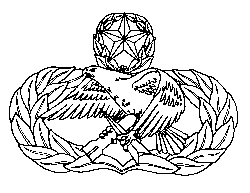
............
......................
.........................
![]()




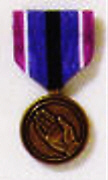


....................![]()
![]()
![]()
![]() .........
.........![]() .............
............. ![]() ............
............![]()
![]()
![]()
![]()
![]()
![]()
![]()
![]()
Gene E. Skinner Jr. was born August 21, 1957 in Killeen Texas to Jo Ruth (Reding) Skinner and Gene E. Skinner. Not the most steller of students but able to maintain a "B" average, Gene did not pursue college after graduating from Killeen High School. Instead he enlisted in the United States Air Force. He made that his career and has traveled the world during his 24 years as a "Fighter Crew Chief". Below is a thumbnail of his career.
The flags of all the states and countries he has visited during his Air Force career are included as are the medals earned and the rank insignia. The aircraft that Gene was assigned to and the patches of the units he was in are also included. Some units may not be depicted because they have deactivated and the patches are not available.
 Lackland AFB and Sheppard
AFB, Texas
Lackland AFB and Sheppard
AFB, Texas
Basic Training 18 Sept 1975 through 9 November 1975, Lackland AFB, Texas. God what have I gotten myself in to. That's the first thing that came to mind right after getting off the bus at the barracks of the 3703rd Training Squadron. SSgt Pikalski and SSgt Bailey would make sure that Gene was taught the proper way to do any and everything the Air Force way. SSgt Cooke would join the picture later. 6 weeks of intense training and education would follow that initial day of screaming and yelling. Not physically challenging but mentally exhausting is the Air Force basic training. Gene still lost 51 pounds though. After the initial 6 weeks of "Basic" he was off to Tech School at Sheppard AFB, Texas.
Technical Training, Jet Aircraft 1 & 2 Engines, 10 November 1975 through 22 January 1976, Sheppard AFB, Texas. Here Gene learned all you ever wanted to know about airplanes but were afraid you would find out. He did well. Although not a distinguished graduate he was in the accelerated class. He would finish the course fourth in his class, there was only one distinguished graduate award to be had. Gene recieved orders for Webb AFB, Texas and was overjoyed. A week later they were cancelled and replaced by orders for Hill AFB, Utah.
![]()
 Hill AFB, Utah
Hill AFB, Utah 

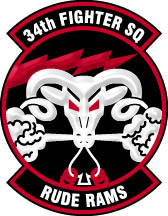

F-4D "Phantom II"
 F-16A/B "Fighting Falcon"
F-16A/B "Fighting Falcon" Blocks 1 /1A / 2 / 5 / 10 / 15
Blocks 1 /1A / 2 / 5 / 10 / 15
388 Tactical Fighter Wing, 34th Tactical Fighter Squadron, Deputy Commander for Maintenance Maintenance Operations Center, and 16th Tactical Fighter Training Squadron, Hill AFB, Utah February 1976 through March 1981. More training as a "Crew Chief" paid off quickly. Gene was assigned his own aircraft, F4-D 65-0707, soon after completing his training. Gene continued to advance his skills and was a highly respected technician in the 34th TFS and Crew Chief of F-4D 65-0743 after 65-0707 went in for depot maintenance. After completing a rather hectic year of temporary duty assignments around the western United States Gene decided it was time to leave the flightline and learn some of the other functions that comprise the entire maintenance effort. He soon found himself in Maintenance Control. The job was mentally demanding and Gene adapted well to it. He was assigned to control the maintenance of the Wing's new F-16 aircraft. Feeling a little lost at first he attended the first F-16 field training school at Hill AFB and came back to the Control Center with a new outlook. No longer lost, he controlled the maintenance and flying of the 16th TFTS as no one else could. He could recite the status of all 30 aircraft instantly without refering to the status board. After being promoted to Staff Sergeant in September 1980 Gene moved back to the flightline. He was assigned to the 16th TFTS as Crew Chief of F-16B 78-0084, the 7th F-16B manufactured. He recieved orders soon afterwards for Kunsan AB, Korea.
![]()
![]()
![]()


![]()
 Kunsan AB, Korea
Kunsan AB, Korea
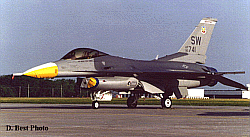 Block 15 F-16A/B "Fighting
Falcon"
Block 15 F-16A/B "Fighting
Falcon" 
8th Tactical Fighter Wing, 8th Equipment Maintenance Squadron, Kunsan AB, Republic of Korea April 1981 through April 1982. Gene arrived in Korea, the ROK as it affectionally known, in April of 1981. He was assigned to the 8th EMS Transient Alert Section as a Shift Supervisor. He was also assigned the task of training the assigned personnel the crash recovery procedures for F-16 aircraft. Transient Alert was a new and challenging job. Working 24 hour shifts and all types of aircraft, US and ROK, he loved the job. Gene liked the image that his section promoted. Every shift was inspected daily for haircuts, and uniform appearance, this inspection included vehicles. It had to be that way, Transient Alert was the first and last people that visitors arriving at the base saw. The most excitement during the year long tour was the late night arrival of fully armed F-4E's and their support personnel from Clark AB after North Korea fired a surface to air missle at an Air Force SR-71 reconnassance jet. He survived this year with his wit and humor intact and with a better idea of what the world looked like outside the borders of the United States. He also made friends there that will remain friends forever. A follow on assignment to MacDill AFB, Florida followed.
![]()
![]()
 MacDill AFB, Florida
MacDill AFB, Florida


 Block 15 F-16A/B "Fighting
Falcon"
Block 15 F-16A/B "Fighting
Falcon"
56th Tactical Fighter Training Wing, 56th Equipment Maintenance Squadron, MacDill AFB, Florida, April 1982 through April 1985. Finally some sunshine. Hill AFB was cold and Korea hadn't been much better. MacDill promised to be at least good climate. A day after signing in to the base Gene was called to come to work. Seems there were 4 F-16's heading for Hahn AB, Germany and no one in Transient Alert, Gene was assigned there at MacDill also, was qualified on the aircraft. Gene went to work and did all the inspections and servicing required for the aircraft while training his new co-workers on the tasks. That was the start of 3 years at one of the highest transient aircraft traffic bases in the world. Gene was Promoted to Technical Sergeant February 1, 1988. Gene worked primarily as the "C" shift chief for the entire 3 years. During those 3 years Gene and his crew either launched, recovered, or serviced every aircraft type flying in all the US Armed Forces including the Guard and Reserve from a Navy C-54 to the newest aircraft of the time the Navy's F-18. Gene recieved an Air Force commendation Medal for his service at MacDill AFB. Gene left MacDill in April 1988 for Misawa AB Japan.
![]()
![]()

![]()
![]()
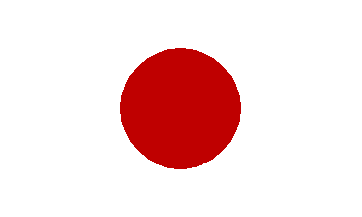 Misawa AB, Japan
Misawa AB, Japan 
 Block 30 F-16C/D
"Fighting Falcon"
Block 30 F-16C/D
"Fighting Falcon" 
432nd Tactical Fighter Wing, Deputy Commander for Maintenance Maintenance Operations Center, Misawa AB, Japan, April 1985 through April 1988. Gene arrived at Misawa and after hearing of his maintenance control experience his supervisors quickly shuffled him into the Maintenance Operations Center where he would serve 3 years as Noncomissioned Officer in Charge. The task he was handed was not easy and would try all of his experience and skill. He was allowed to hand pick the 14 people that would be responsible for coordinating every aspect of maintenance of the wing's new F-16C/D aircraft. The room of his new workcenter had just been completed prior to his arrival. Just the room, no equipment except for 2 new computer systems. Gene spent the majority of his time designing or constructing the work center. After spending almost 1 million dollars in equipment and construction the center was the model for PACAF. A small room with all systems built in and computer controlled radio systems was Gene's haunt for those three years. Gene recieved 3 consecutive Wing Commander endorsements on his performance reports and an Air Force Commendation Medal for his service at Misawa. Gene left Misawa AB for Shaw AFB South Carolina in April 1988.
 Republic of Korea
Republic of Korea  Phillipines
Phillipines
![]()

![]()
 Shaw AFB, South Carolina
Shaw AFB, South Carolina

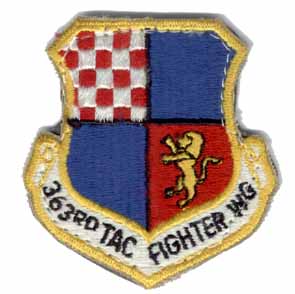


 RF-4C "Photo Phantom"
RF-4C "Photo Phantom"
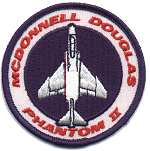
 Block 25 F-16C/D "Fighting
Falcon"
Block 25 F-16C/D "Fighting
Falcon" 
363rd Tactical Fighter Wing, 363rd Equipment Maintenance Squadron, Shaw AFB South Carolina May 1988 through March 1991. What a time!!! Shortly after arriving Gene was placed in charge of the RF-4C inspection dock. Gene and his crew were the hardest working crew in the entire squadron. Even working on aircraft that were 20 or more years old Gene and his crew managed to win Inspection Dock of the Year over the 3 newer F-16 inspection docks. In that same year the maintainers of the 363rd TFW won the Dadalion and the Pheonix Awards, Air Force and DoD level awards for maintenance excellence. The 363rd was also inspected that year and garnered and Outstanding rating form the Tactical Air Command Inspector General. Hurricane Hugo pummeled Shaw AFB on September 22nd 1989 and Gene spent the next 2 weeks helping to get the base and the Sumter community back on it's feet. One day after the power came back on Gene went to the Noncomissioned Officers Academy at Tyndall AFB, Florida. Gene enjoyed the 6 weeks of study and managed to graduate 25th in a class of 150. He also was awarded the Professionalism Award for his academic excellence, communication skills, and leadership abilities. Gene was promoted to Master Sergeant January 1,1990. Shortly afterward the RF-4C's left Shaw AFB and Gene was moved to Assistant Noncomissioned Officer in Charge of the Inspection Section. Gene filled his position by supervising the night shift phase docks and coordinating maintenance with the Fighter Squadrons. August 15, 1990 Gene deployed to Al Dhafra AB, UAE.
Desert Shield and Desert Storm
 Spain
Spain  United Arab Emirates
United Arab Emirates
Gene continued serving as the Assistant NCOIC of the Inspection Section but picked up a couple of other job titles. After Desert Shield turned into Desert Storm on January 17th 1991 Gene was placed in charge of the end of Runway crew, and the Heavy Maintenance or "Hardbroke" Crew. The people under Gene's supervision really picked up the pace, averaging just 36 hours per aircraft they completed phase inspections and time changes in record time ensuring that more than adequate numbers of aircraft were available to bring the air war to Saddam Hussien's misguided forces. Gene recieved news that his stepfather had terminal cancer and applied for and recieved a humanitarian assignment to Bergstrom AFB, Texas under his personal condition that he would not leave until the war was over. Gene's commander informed him on the night of 27 February to pack his bags he was going home. Gene had the privilige of telling his crew that the war was over. Gene arrived back at Shaw AFB and began preparing to leave, the day he left Shaw AFB he made one last stop to greet the people he had spent the last 7 months with in a desert as they too returned. Gene recieved an Air Force Commendation Medal, Air Force Achievement Medal, Southwest Asia Service Medal, National Defense Medal, Humanitarian Service Medal, Liberation of Kuwait Medal (Saudi Arabia), and the Liberation of Kuwait Medal (Kuwait), and an Air Force Outstanding Unit Ribbon. Gene was also credited with a short tour for his 199 days deployed to the United Arab Emirites. Gene left for Bergstrom AFB, Texas in March 1991.
![]()






![]()
![]()
![]()
![]()

 Bergstrom AFB, Texas
Bergstrom AFB, Texas 
 RF-4C "Photo Phantom"
RF-4C "Photo Phantom" 
67th Recconnasaince Wing, 67th Equipment Maintenance Squadron, 67th Equipment Maintenance Branch April 1991 through October 1992. Finally back in his home state and once again back on the F-4. Gene spent the first few months as the Night Shift Supervisor of the Maintenance Branch of the Equipment Maintenance Squadron. After hearing of his expertise on the aircraft and witnessing his ability to lead and supervise his superiors moved him to the Assistant Maintenance Superintendent position. Gene was offered other positions but decided to stay with the Equipment Maintenance Squadron. In June of 1992 he was appointed the Superintendent of the Equipment Maintenance Branch. Gene's infectious laugh and good natured "let's get the job done" attitude propelled the Branch to accomplish its mission of closing the base and maintaining the last operational RF-4C's in the Air Force with the highest in commission rates and quality ratings seen in years. With the base closing he took on several tasks that were not in the mainstream of aircraft maintenance. He supervised the disassembly of Recce Park. A static display of historical recconnasaince aircraft that included an RF-80, RF-84, RF-101, RF-4C, and an RB-66. Personally involving himself he turned wrenches, towed aircraft, coordinated and even photographed the "Elephant Walk" as the planes were towed from their displays down the bases streets to the flight line to be disassembled and shipped to bases throughout the United States. Gene also supervised the preparation and positioning of an RF-4C in front of Baty Elementary School in Del Valle, Texas. His name is listed with the technicians that prepared the aircraft for its final mission. The RF-101 is now on static display at Maxwell AFB Alabama. Gene enjoyed being close to his family again and hated to leave but with the base closing there really wasn't a choice. Gene recieved an Air Force Commendation Medal for his accomplishments at Bergstrom. He left family and friends behind again for Moody AFB, Georgia in October 1992.
![]()

 Moody AFB, Georgia
Moody AFB, Georgia 
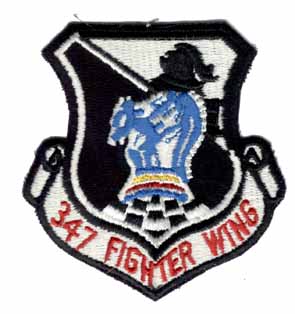

 Block 40 F-16C "Night Fighting
Falcon"
Block 40 F-16C "Night Fighting
Falcon" 
347th Fighter Wing, 69th Fighter Squadron, Moody AFB Georgia. October 1992 through October 1994. Once arriving Gene realized he had walked into a hornets nest. The base had absorbed two squadrons of F-16's that had evacuated Homestead AFB Florida before hurricane Andrew devastated it. Now the squadrons were based there permanantly. Gene had hoped his next assignment would put him in a job equal to his talents. He would be temporarily dissapointed. Gene was informed that he would be taking over the Support Section. Support Sections typically were manned by what are affectionately known as the "misfits". Folks that just don't quite fit into the grand scheme of things. He would be responsible for all the tools and test equipment and the accountability of it and the squadrons maintenance supply function. Gene soon found that his crew of "misfits" may not be the "shiny pennies" of maintenance but they were the experts when it came to the support functions. He had resident experts on mobility, equipment accountability, tool maintenance and supply, test equipment maintenance, and one hyperactive assistant. Gene took these folks and set them in the right direction and turned them loose. His section went from the most disdained place to work to one of the places that people were volunteering to work in. With Gene's ability to get the best from his people the section improved substancially. The first major inspection was passed with flying colors, even the Major that had made the Support Section his "pet project" finally relented. Gene wasn't finished yet. He would take his "misfits" to the desert of Saudi Arabia for 4 months in support of Operation Southern Watch.
 Canada
Canada  England
England  Ireland
Ireland
 Kingdom of Saudi Arabia
Kingdom of Saudi Arabia  Bahrain
Bahrain
While deployed to Operation Southern Watch Gene's crew set about the task of improving their surroundings. First they rebuilt the entire Support Section. They built new shelving for equipment, benches for maintaining equipment, and even a HUGE desk for both the supply section and the support section. Gene and one of the "misfits" affectionately known as "Giggles" built or rebuilt every deck/porch for all the F-16 maintenance trailers, even the bathroom trailer had a six foot wide solid red oak deck around it when Gene and "Giggles" got finished. Gene and his crew also took on the task of starting and testing a bar code system to account for all the tools and test equipment. The equipment to accomplish this had arrived just one day prior to the squadron's departure for Suadi Arabia so it was going to be a pretty rough task. Only two weeks after arriving Gene and his crew had the system up and running. Gene traveled to Bahrain several times during the deployment as a Troop Commander for his squadron's R&R trips. OK so it wasn't all work. Gene even managed, in true Texas style, to find the only Country and Western bar in town. When Gene and his squadron left for the states the F-16 maintenance accomodations had been improved in every area. Even accounts that had gone neglected for several rotations were cleared.
Back at Moody, Gene and the "misfits" took the experience from the desert and applied it at home. Gene had a new section to work out of. The Support Section had been rebuilt during the deployment and was ready for all the new and improved systems worked out in the desert. Gene was finally moved to Production Superintendent shortly after returning from the desert. The "misfits" presented Gene with a trophy for being "The best damned supervisor they had ever had." that compliment meant more than any medal or plaque could have. As a production supervisor Gene used his unusual style of expecting people to do their best and reminding them that he was just the coach and they were the players. He was able to motivate and inspire his troops and demanded no more from them than he did from himself. He was not afraid to turn a wrench or kick a little butt when things required that "personal " touch. His tenure was shortlived though. After just two years of hard work and challenges Gene was once again headed for Misawa Japan.
 Saudi Arabian Air Force Master Sergeant
Insignia "Camel Tongue"
Saudi Arabian Air Force Master Sergeant
Insignia "Camel Tongue"
 Misawa AB, Japan
Misawa AB, Japan 


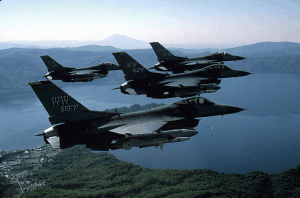 Block 50 F-16C/D "Wild Weasel"
Block 50 F-16C/D "Wild Weasel" 
 Australia
Australia  New Guinea
New Guinea
35th Fighter Wing, 13th Fighter Squadron, 35th Operations Support Squadron, Misawa AB Japan, November 1994 through Present. Gene began his new assignment as a Production Superintendent. He began by first getting to know the folks and peculiarities of the newer F-16 "Wild Weasels". After a short time he felt comfortable with the aircraft and the people he was charged with supervising. He then set to the task of making the job of producing sorties fun. His particular brand of humor and slightly maverick style of leadership at first befuddled the troops but soon they started to enjoy doing their best to get the job done. Gene tried as best he could to direct the pressure away from the people turning the wrenches and kicking the tires and on to his shoulders. He trusted his troops to do their best and made it a point to tell them that they had the last word on the airworthiness of the aircraft. He did ask them to prove their knowledge on occasion when he had some question about "the fix". He was quite happy with both the integrity and the knowledge of his troops. Gene moved on when a new problem surfaced and took over the Mobility NCOIC position. Gene buried himself in his new job and began overhauling the Mobility Machine. He won the respect of his commander and would not rest until he had it right. He set to the task of taking a fighter squadron from a marginal deployment effort to a squadron that did it right every time. His innovative look at the processes and the smashing of paradigms proved to be just the thing the squadron needed to break out of the former lackluster performance. The effort was rewarded when he was selected to move to the 35th Operations Support Squadron. There he would be the Plans Superintendent, responsible for ensuring that the maintenance and logistics for the fighter squadrons were properly planned and supportable. He has additional duties that span almost his entire wealth of knowledge. Still, he looks to the sky when he hears the thunder of a "Fighter" and still wishes he had had a part in putting it there. Some desires never die.
Gene plans to retire in October of 1999, with 24 years of service to his country. Currently his plans after retirement are to build his house on his "ten acres of Texas" 20 miles south of Killeen and find a challenging career in either the high technology or aircraft field. Hopefully he will find an employer that will value his experience as a manager, and appreciate his leadership abilities.

![]()